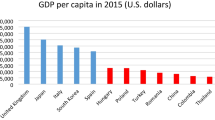Abstract
During the Cold War, Western and Eastern Europe experienced a different economic development that resulted in different industrial structures and a huge gap of real wages. When the Iron Curtain fell, there was widespread expectation that low wages in the East would motivate Western businesses to relocate their production lines, moving jobs from the West to the East.
This paper analyzes actual Direct Foreign Investment in the early years of economic transition with respect to the role of labor costs. Are jobs relocated from Western to Eastern Europe? Theoretical basis is the developmental theory of Direct Foreign Investment which is based on Asian experiences. It relates investment flows to stages of development and shows how factor cost differences lead to relocation of productive activity.
The evidence in Eastern Europe, however, rejects the transferability of the model. Neither are labor intensive firms more actively investing, nor does investment concentrate in those industrial sectors where the host economy has comparative advantages. The empirical test does, however, find significant support for a proximity pattern of investment and a negative relationship of investment and diversification.
Similar content being viewed by others
Author information
Authors and Affiliations
Rights and permissions
About this article
Cite this article
Meyer, K. Direct Foreign Investment in Eastern Europe the Role of Labor Costs. Comp Econ Stud 37, 69–88 (1995). https://doi.org/10.1057/ces.1995.42
Published:
Issue Date:
DOI: https://doi.org/10.1057/ces.1995.42




